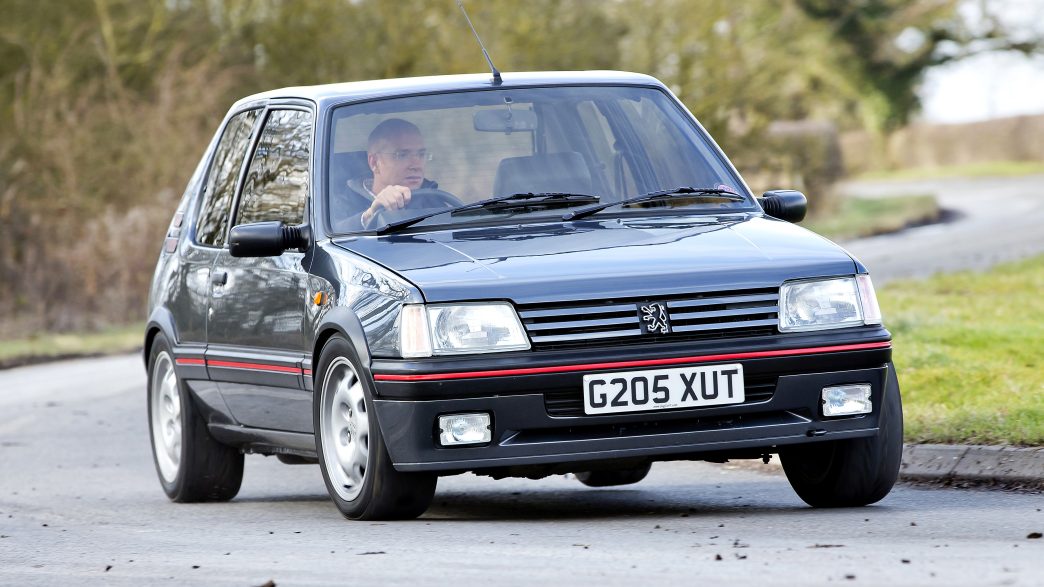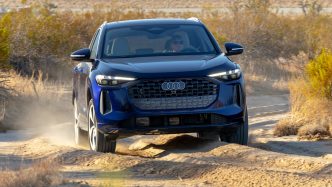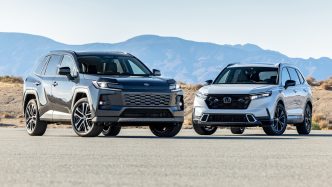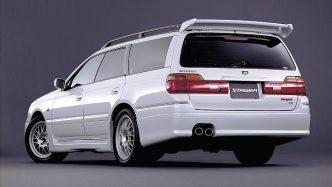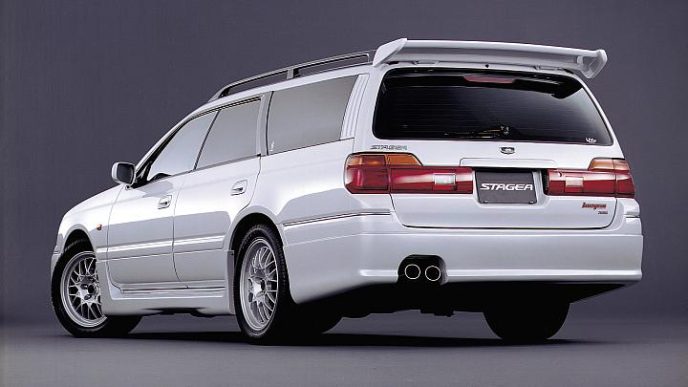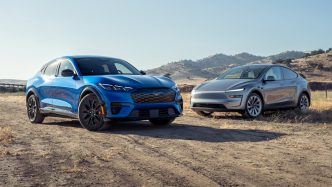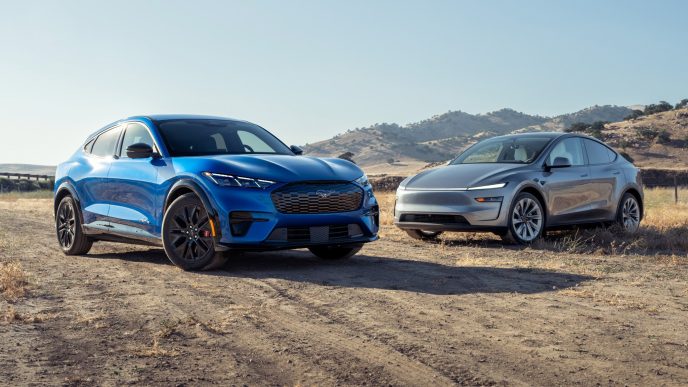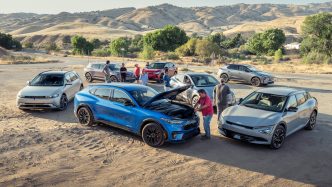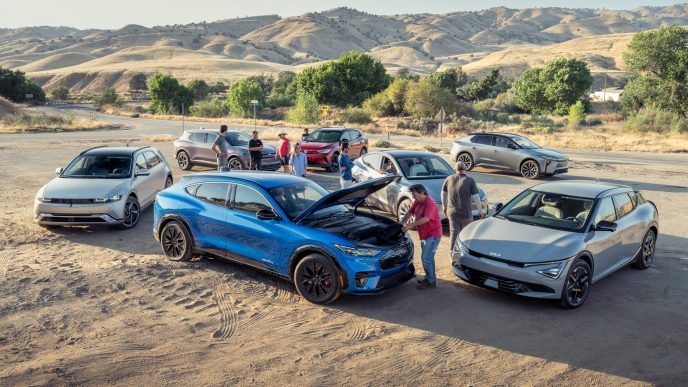1. Peugeot 205

During the 1970s, Peugeot expanded rapidly — first by acquiring Citroën in 1975 and then Chrysler’s European operations in 1978, forming the PSA Group. But this ambitious growth quickly backfired, dragging the automaker into serious financial difficulties.
To stay afloat, Peugeot needed a miracle in a small package — and it found one. In 1985, the company unveiled the 205, a compact hatchback that blended charm, quality, and fun-to-drive spirit. Practically overnight, it became a sensation.
The 205’s versatility was its secret weapon: three-door, five-door, and convertible versions each had their own appeal. A series of special editions boosted its allure, including the sporty 1.6 and 1.9 GTi trims, and of course, the rally-bred 205 T16 Group B legend.
2. Bentley Continental GT
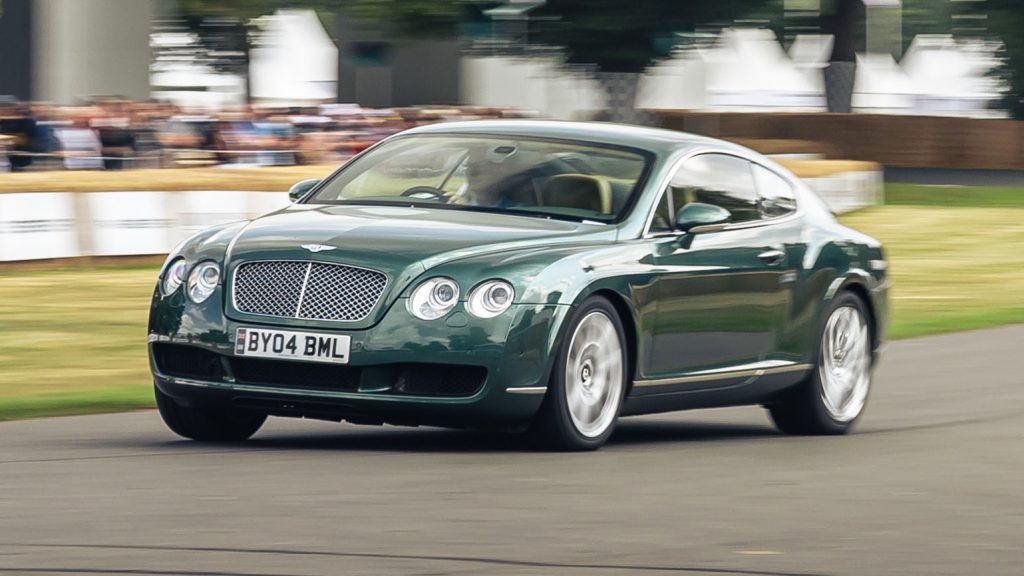
Before the Continental GT burst onto the scene in 2003, Bentley was producing just around 1,000 cars annually. Five years after Volkswagen’s acquisition, the brand desperately needed a success — and the Continental GT delivered beyond expectations.
With its graceful coupe silhouette, four-seat luxury cabin, and twin-turbocharged 6.0-liter W12 engine, the GT struck the perfect balance between power and elegance. Over 3,200 buyers placed deposits before the car even launched, and the first year saw an astonishing 6,896 sales — a sevenfold increase for Bentley.
More than 40,000 units later, it proved VW’s faith was justified. The Continental GT didn’t just save Bentley; it redefined the brand for the modern era.
3. Aston Martin DB7

By the late 1980s, Aston Martin seemed adrift — a proud marque fading into memory. Then Ford stepped in, and in 1994, the company unveiled a car that would rewrite its destiny: the DB7.
Penned by designer Ian Callum, the DB7 shared an evolved platform with the Jaguar XJS (also under Ford’s wing) and featured a 3.2-liter supercharged inline-six. It borrowed components from Ford, Mazda, and Citroën — a mix that worked astonishingly well.
The DB7 wasn’t just beautiful; it was accessible. Priced at about $97,000, it offered a realistic gateway into the Aston world. More than 7,000 were sold, putting the brand firmly back on the map.
4. Porsche 986 Boxster and 996 911
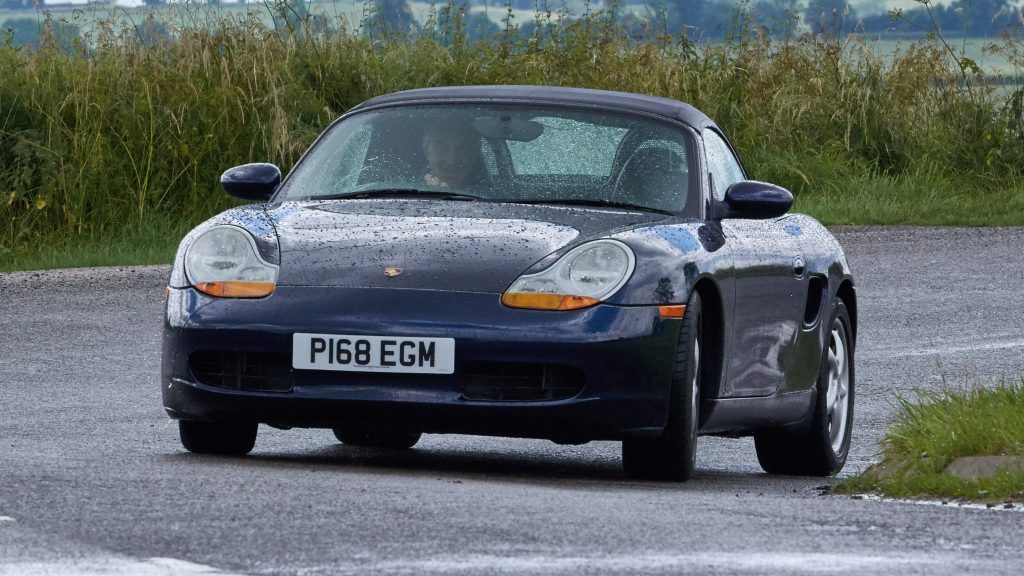
In 1992, Porsche was teetering on the edge of bankruptcy. Sales of the 911 had plummeted, especially in the U.S., while its front-engined 928 and 968 struggled. The company had three product lines with few shared parts — an unsustainable setup. Then came Wendelin Wiedeking, a production specialist determined to turn things around.
In 1993, Porsche unveiled the Boxster concept — a mid-engined roadster that looked fresh, youthful, and attainable. The resulting 986 Boxster shared much of its front structure and engine technology with the new water-cooled 996-generation 911, cutting costs dramatically.
Purists grumbled about the move to water cooling, but Porsche’s strategy paid off. The Boxster and 996 didn’t just save the company — they laid the foundation for a new era, paving the way for icons like the Cayenne.
5. Nissan Qashqai

At the dawn of the 2000s, Nissan was in dire straits, its factories running at half capacity. When Carlos Ghosn took the helm, he made two bold moves: slash costs and build cars people actually wanted.
In Europe, Nissan had strong production but forgettable products. The answer came in 2006 — the Qashqai, a model that practically invented the modern crossover. It combined the practicality of a hatchback with SUV-like styling and versatility.
Europe fell in love, and Nissan’s Sunderland plant roared back to life. The Qashqai didn’t just rescue Nissan — it changed the shape of the entire industry.
6. Volkswagen Golf MkI

Volkswagen’s success story began with the Beetle, but by the early 1970s, the company faced a daunting question: what comes next? Attempts like the Type 4 and the mid-engined EA266 project failed to deliver, leaving VW at a crossroads.
Then Rudolph Leiding took over and changed course completely. He commissioned a fresh lineup — starting with the Passat and soon followed by the Golf MkI. With front-wheel drive, a straight-four engine, and crisp modern styling, it was everything the Beetle wasn’t.
The Golf was an instant hit and became the cornerstone of Volkswagen’s future — a car that redefined the compact segment and saved the brand from collapse.
7. Austin Metro

By 1980, British Leyland was a national embarrassment — plagued by strikes, mismanagement, and a jumble of failing cars. The company was largely state-owned, and Prime Minister Margaret Thatcher was close to pulling the plug.
For years, it had tried and failed to replace the iconic Mini. Then came the Metro, and suddenly, Britain had a reason to cheer. It sold in droves, and for once, it deserved the hype.
Patriotic pride ran high: TV ads showed Metros defending the White Cliffs of Dover from “invading” foreign cars. In the spirit of the Falklands era, it became a cultural phenomenon — proof that British Leyland could still deliver a hit.
8. BMW 700
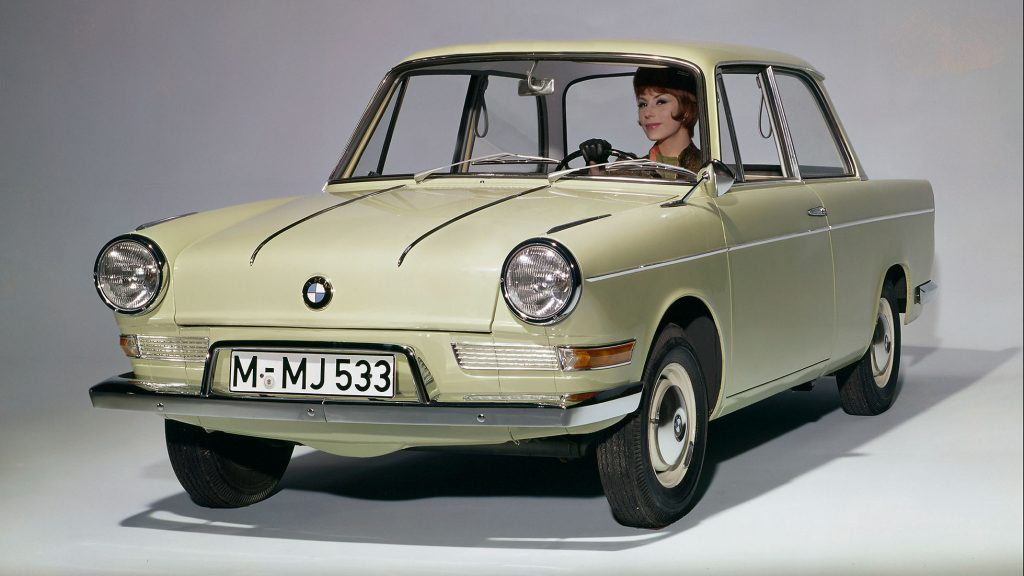
It’s hard to believe now, but in the late 1950s BMW was on the brink of bankruptcy. A string of poor-selling models — from the 501 and 503 to the quirky Isetta — nearly sank the company. The turnaround came in 1959 with one small but mighty car: the BMW 700.
Debuting at the Frankfurt Motor Show, it was BMW’s first car with a monocoque body, giving it vastly improved handling. Its rear-mounted 697cc flat-twin engine, derived from BMW’s motorcycles, delivered just enough power to make it nimble and fun.
Available as a coupe, sedan, and convertible, it sold 188,000 units before production ended in 1965 — enough to keep BMW alive and set the stage for its rise as a premium powerhouse.
9. Volvo XC90

Volvo, in fact, has been saved twice by the same nameplate.
The first XC90, launched under Ford ownership in 2002, was a revelation — a roomy, flexible crossover that felt big inside but remained manageable on the road. Its transverse-engine layout gave it an edge over bulkier rivals, and it became a smash hit across Europe and the U.S.
The second XC90, introduced after Ford sold Volvo, marked the company’s rebirth. It debuted Volvo’s in-house platform, streamlined powertrains, and new hybrid systems. Starting with this model, Volvo rebuilt its lineup — and its profitability — from the ground up.
10. 1949 Ford

When Henry Ford died in 1947, his company seemed doomed to follow him into history. Its lineup was stuck in the past, and sales had slipped to third place in America. But his grandson, Henry Ford II, had a different vision.
At just 28, he took the reins and fast-tracked development of an all-new car. In only 19 months, the 1949 Ford was born — sleek, modern, and utterly unlike its predecessors. When it was unveiled in June 1948, a staggering 100,000 orders poured in that same day.
With over a million sold, the ’49 Ford didn’t just revive the brand — it reinvented the American family car.
11. Chrysler K-car
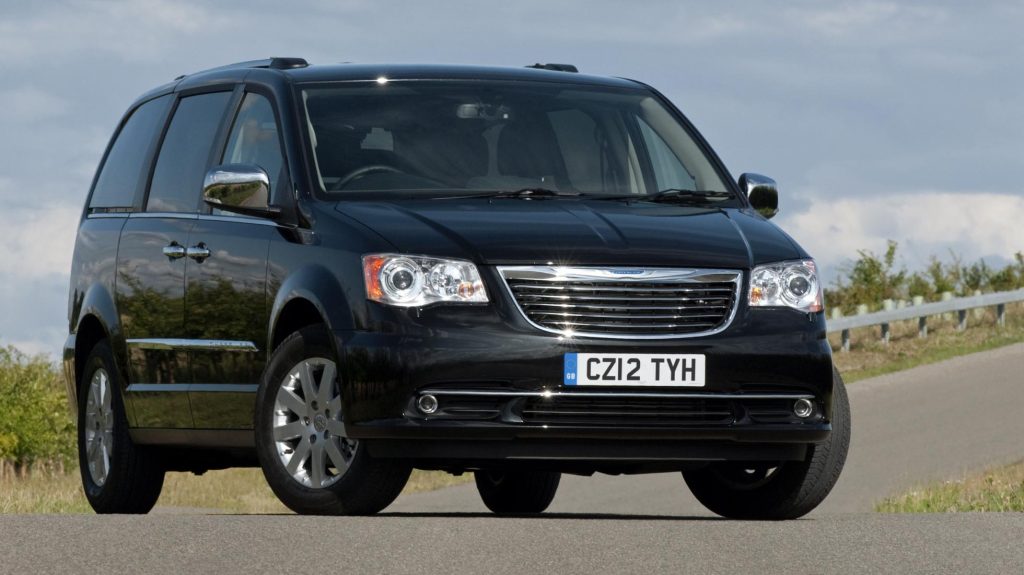
In 1980, Chrysler was staring into the abyss, saved from bankruptcy only by massive federal loan guarantees. But its new CEO, Lee Iacocca — the man behind the Mustang — had a plan.
He introduced a series of small, front-wheel-drive cars on a new “K” platform, starting with the Dodge Aries and Plymouth Reliant. Affordable, efficient, and modern, they sold by the truckload throughout the 1980s.
Soon the K platform stretched into upscale models like the Chrysler LeBaron and New Yorker. But the real masterstroke was yet to come — the K-based Voyager and Caravan minivans, which revolutionized the American family car market and pulled Chrysler back from the brink.
From city runabouts to grand tourers, these cars didn’t just move metal — they resurrected entire brands. Each proved that the right car, launched at the right moment, can turn disaster into destiny and write a whole new chapter in automotive history.

